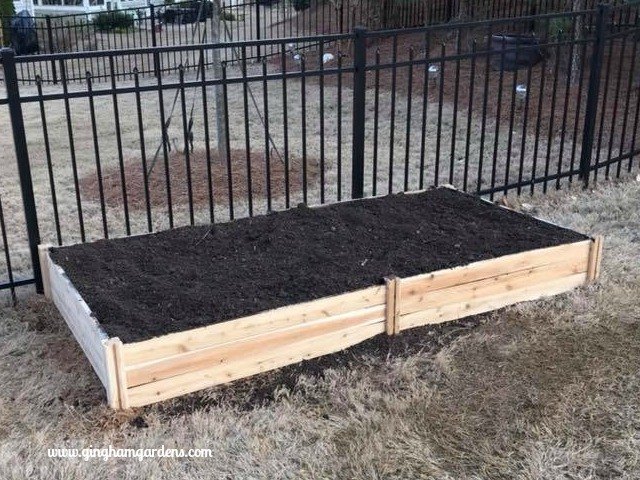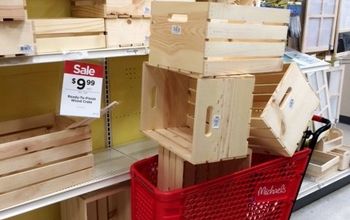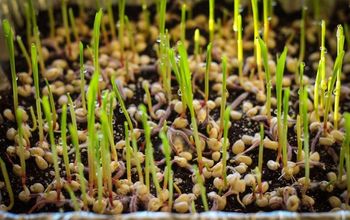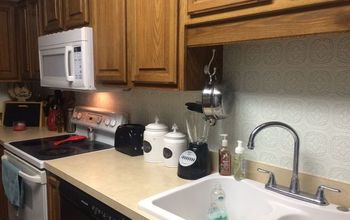How to Plan & Plant a Vegetable Garden

There’s just something about growing your own food that is incredibly gratifying! My passion is really flower gardening, but I love growing veggies too. Vegetable gardening is a part of my heritage. There were seven kids in my family and I can remember having a vegetable garden every summer. My dad would make us get up at the crack of dawn (in the cool of the day, he would say) to pull weeds and tend to the garden. This was no little garden with raised beds either, it was an old fashioned, huge garden cut right into the ground. After all, we had a family of 9 to feed and the neighbors and families in need. Said with a note of sarcasm, but really with a heart of gratitude for the lessons that were taught. Of course, we moaned and complained about getting up early and we all swore we’d never have a garden when we grew up. And yet, most of us do. Can any of you relate to this story?
As always, I will do my best to craft a tutorial according to what has worked for me. So, we’re going to keep Vegetable Gardening 101 very, very simple – just because it is!
If you are new to vegetable gardening, you might want to take a few minutes to read through Flower Gardening 101. There are many tips and instructions in that post that apply to vegetable gardening as well.
Choosing a Spot for Your Vegetable Garden
Pick a spot of real estate in your yard that gets full sun – that’s 6 or more hours of bright sun per day. Your vegetables will produce better and taste better in full sun. I don’t care how many Pinterest pins you can find (and there are plenty) that say “10 Vegetables That Grow In The Shade” blah, blah, blah… Sorry to disappoint, but vegetables need sun to grow.
If this is your first vegetable garden, start small. You might even want to consider trying some vegetable plants in containers.
Prepare the Bed for Planting:
If you aren’t going to used raised beds (see below), you’ll need to clear out a space. You can do it the hard way by digging up all the grass and weeds, or if you aren’t in a hurry, you can use what’s called the Lasagna Method. Use a garden hose or rope and lay it out to mark the edge of the garden. Now, clear out all the grass and weeds. This is hard work and another reason to start small.
Next you’re going to amend the soil a bit. Mix in a good amount (like 4 or 5 inches on top of your existing soil) of good organic compost. Check to see if there is a compost site available in your county, where you can pick up free compost. If not, it's easy to find bagged compost at most big box stores. After the compost has been mixed in, rake over the entire area to smooth and level it out. Now you have a blank slate with which to plan out and plant your veggie bed. I love dirt and this part always excites me. And, yes, I realize I'm a little strange!
Plan Your Veggie Bed:
I have a couple of handy printables (Garden Plans and Garden Doodles) that I use and they are available in my Gardening Resources Library for planning out your garden. If you’re a beginner, keep it simple and use the following pointers:
- Run your vegetable rows from north to south for best sun exposure.
- Think about how you place your plants so taller ones don’t block the sun for shorter ones.
- Add in some marigolds for pops of color and as a bug deterrent.
- Add in some herbs.
Choosing Which Vegetables to Plant:
Choosing which vegetables to plant goes hand-in-hand with planning out your veggie bed. It really helps to decide which vegetables you want to plant before you even go shopping for plants or seeds. Again, if you're a beginner, keep it simple and consider picking just 5 or 6 vegetables for your first year.
Planting Your Vegetables:
After you've done some reading, prepped your bed for planting, decided which vegetables to plant and purchased your plants and seeds, it's time to plant. This is where things get very simple, simply follow the directions for planting on the seed packet or the tag that comes with the vegetable plant. Really, it's that simple.
Learn how to grow winter squash.
Additional Tips and Suggestions
- Fence in your veggie bed. You don’t want to do all this work just to have your produce eaten by rabbits.
- Water. It seems silly to mention it, but your little baby plants need it. A good rule-of-thumb to follow is to water newly seeded areas and plants every day. By late spring and continuing throughout summer (once the plants and seedlings are established) water less often like 1-3 times a week, but more deeply to encourage roots to grow deep. Just a note that raised beds and container garden typically need to be watered more often because they are above the ground.
- Consider mulching between the rows and around the plants in your garden. You can use dried grass clippings (that haven't been chemically treated), shredded leaves or shredded mulch. Mulch helps cut down on weeds, helps to hold moisture in the soil around your plants, and nourishes the soil.
- Make planting and caring for a vegetable garden a family affair and include your children. There are so many lessons that can be taught when planting and caring for a garden. Plus, it really can be fun.
Thanks for following along with my take on Vegetable Gardening 101. If you would like the complete tutorial and more pictures, please stop by Gingham Gardens. Whether you're a beginner gardener or an experienced gardener, I hope you learned something and you're inspired to plant a vegetable garden.
Enjoyed the project?
Suggested materials:
- Compost (Home Depot)
- Seeds and plants (home depot)































Frequently asked questions
Have a question about this project?
What season would you plant garlic?